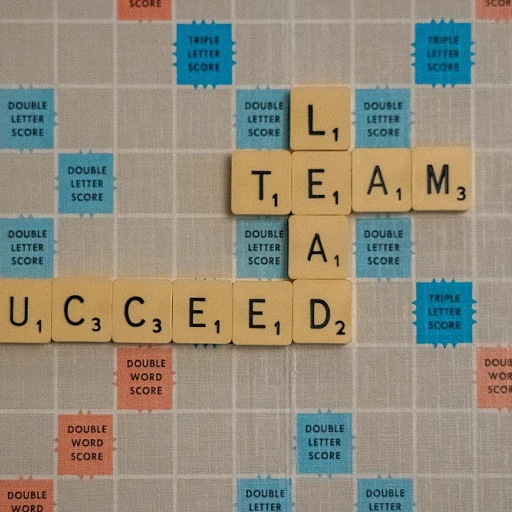
Understanding the Importance of a Farewell Email
The Significance of Saying Goodbye
In today's professional environment, the working day when one announces they're leaving a company is filled with mixed emotions, both for the person leaving and for the colleagues they've worked alongside. Crafting a farewell email is not just a mere formality, but an important step that embodies the professional courtesy of expressing gratitude and maintaining future connections. It's an inevitable part of most careers, which can significantly impact how you are remembered and whether you stay in touch with your professional network. When you send a goodbye email, it acknowledges the time spent, the personal and professional growth achieved, and the valuable relationships built. It’s an opportunity to leave a lasting impression and to ensure that your departure is seen as a transition, rather than an abrupt exit. This is a chance to convey your best experiences and express your positive outlook for the future. Moreover, a thoughtfully crafted farewell email can serve as a bridge to maintain personal and professional connections. It’s essential for keeping in touch, which might include sharing your personal email or inviting colleagues to stay connected through platforms like LinkedIn. Such gestures not only reflect your professionalism but also enrich your personal network, ensuring that your bonds continue beyond your day at the company. To understand how crafting such a message can contribute to a positive employee experience and remain connected with colleagues, you may find inspiration from crafting meaningful farewells. Explore more on how effective communication contributes to a positive work culture.Key Elements to Include in Your Farewell Email
Essential Components to Enhance Your Farewell Email
Crafting a successful farewell email, as you prepare to depart the company, hinges on incorporating key elements that not only convey your message but also leave a positive impression on your colleagues.- Email Subject: Ensure your subject line is clear and direct, such as "Farewell and Stay in Touch" or "Saying Goodbye." A concise subject farewell sets the tone for what your coworkers can expect.
- Personal Greeting: Address your colleagues directly, for example, "Dear Team" or "Hello Everyone." This personal touch is essential for engaging your audience and making your message more relatable.
- Express Gratitude: Take the time to express your gratitude for the best moments and professional experiences you had while working at the company. A farewell email is incomplete without this detailing.
- Thank specific colleagues for their support and camaraderie.
- Mention memorable projects or achievements as part of your journey.
- Share Your Future Plans: While it's not necessary to go into extensive detail, briefly mentioning what lies ahead for you can foster continued connection. You might say, "I will be moving on to new challenges in [Industry/Role]."
- Encourage Continued Contact: Ensure you provide your personal email address or invite them to connect on your LinkedIn profile. This helps in staying in touch and keeping professional relationships alive beyond your leaving day.
- Keep it Professional: Your message should maintain a respectful and positive tone, regardless of your reasons for leaving. Avoid discussing company shortcomings or airing grievances.
- Include a Positive Closing: End your email on a positive note, using closing remarks like "Wishing you all the best for the future" or "Looking forward to staying connected."
Striking the Right Tone
Finding the Perfect Balance: Tone and Content
When crafting a farewell email, striking the right tone is crucial. Your message should reflect professionalism, gratitude, and a sense of positivity about the future. Avoid an overly formal tone that may come off as cold, and steer clear of too much informality that might undermine your professionalism.
Consider the following tips to help balance your farewell message:
- Be Grateful: Express gratitude to your colleagues and the company for the opportunities and experiences gained during your time there. This appreciation not only leaves a positive impression but also strengthens your professional network.
- Be Sincere: Genuine emotion helps in conveying your message effectively. Share memorable moments or achievements that stand out during your tenure, connecting on a more personal level.
- Stay Positive: Focus on the positive experiences and learnings you gained while working with your team. Highlight your excitement for the new opportunities ahead without disparaging the company or team members.
- Maintain Professionalism: Though it’s important to share personal reflections, remember to keep the farewell email within the boundaries of professional communication. Avoid discussing sensitive topics or grievances in the email subject or body.
- Offer to Stay in Touch: Provide your personal email address or LinkedIn profile to your colleagues to keep in touch. This helps maintain professional relationships and support mutual growth.
By balancing these elements, you create a farewell email that leaves a lasting and positive impression on your coworkers, facilitating an environment of goodwill as you embark on your new journey. For more insights on enhancing employee experience, consider understanding how different components can contribute to a flourishing workplace culture.
Common Mistakes to Avoid
Avoiding Common Pitfalls in Your Goodbye Message
Crafting a farewell email involves more than just announcing your departure from the company. It's a chance to express gratitude, leave a lasting impression, and maintain professional relationships. However, amidst the emotion of leaving, it’s easy to make some missteps. Being mindful of common mistakes will ensure your email conveys the right message.
- Overloading the Emotions: While it’s natural to feel emotional about your last working day, ensure your farewell message remains professional and balanced. Avoid overwhelming your colleagues with too much sentimentality.
- Forgetting Key Details: Be sure to include essential elements such as your last day at the company, your personal email address, and any LinkedIn profile link for staying in touch. This makes it easy for colleagues to keep connected and reach you in the future.
- Using Negative Language: Refrain from discussing negative experiences or expressing grievances in your farewell email. The best approach is to stay positive and express gratitude for the learning and growth opportunities during your time with the team.
- Generic Messages: Avoid sending a one-size-fits-all message to everyone. Tailor your email to different audiences when necessary, providing specific anecdotes or acknowledgments to those you've worked closely with.
- Ignoring Future Opportunities: Use this opportunity to subtly express your excitement about future prospects. Doing so without going into too much detail keeps the focus positive and forward-looking.
By avoiding these common pitfalls when you write your farewell email, you ensure that your departure is perceived as respectful and sincere, leaving behind a good impression and keeping doors open for future interactions. Remember, your farewell communication isn't just a goodbye; it's a strategic move in your professional journey.













